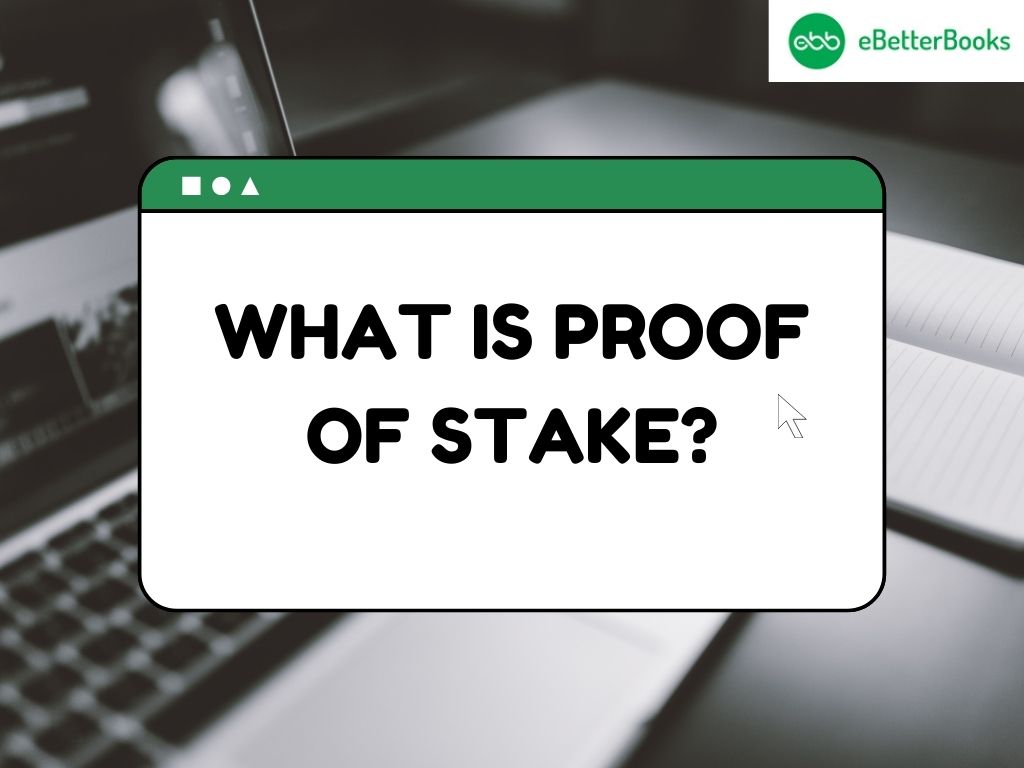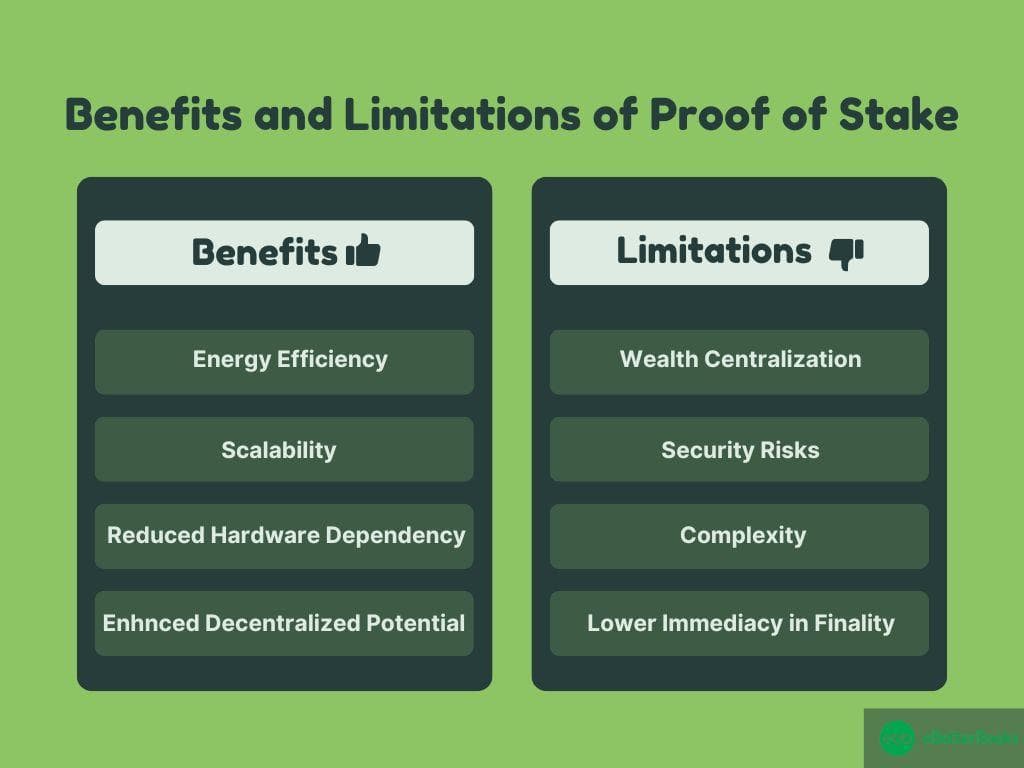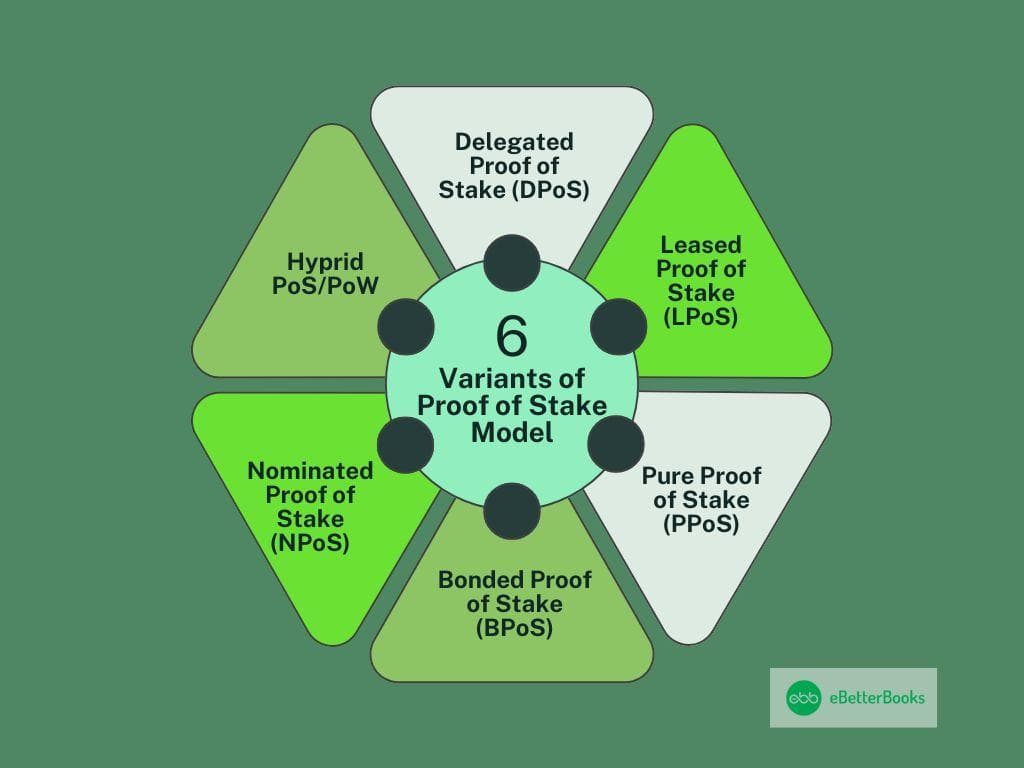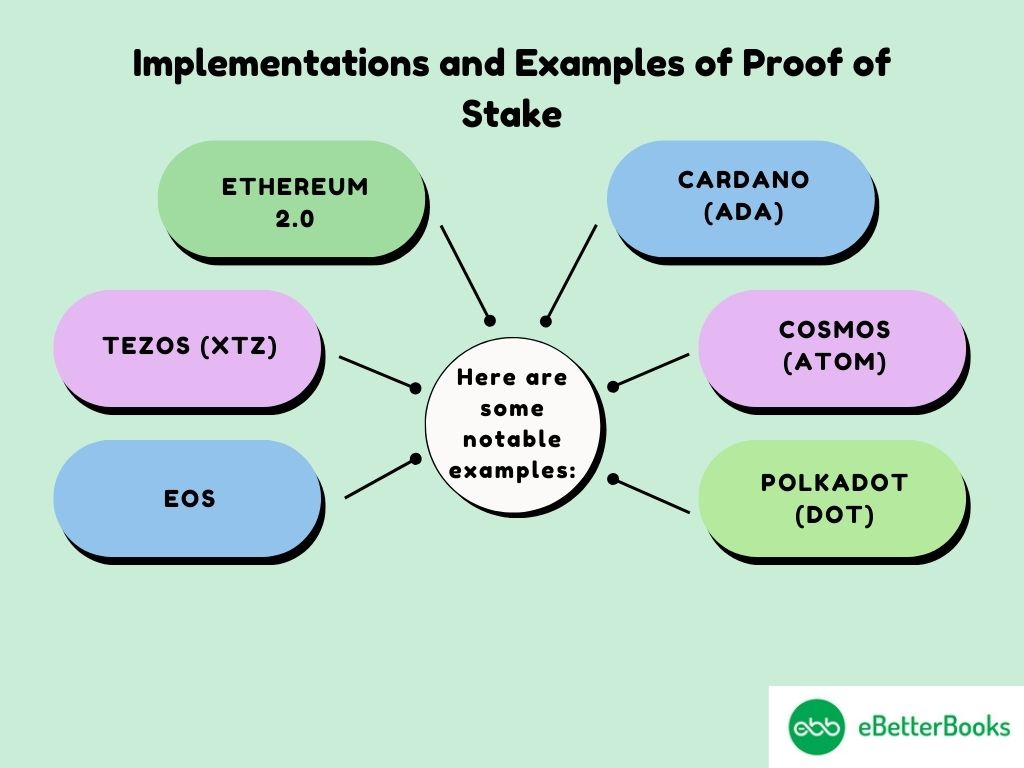What is Proof of Stake?

Proof of Stake is a consensus mechanism proposed for attaining decentralized security and network integrity without incurring the monstrous energy consumption that accompanies Proof-of-Work systems. In the PoS system, individuals can create their own validator node to participate in the transaction verification process. Validator’s stakes are selected for adding new blocks depending on the number of coins they own and are willing to commit to in the system.
By delegating some tokens, the validator nodes also act in the interest of the protocol. Here, any malicious activity leads to a loss of staked crypto tokens in part or in full. This consensus mechanism has been considered cost-effective and environmentally friendly since it doesn’t require very strong computing power to solve algorithms like in proof of work systems.
Understanding the Working of POS System
In any blockchain, consensus mechanisms ensure that all parties within the network view and verify the system’s transaction and the state of the ledger appropriately. In POS, nothing like PoW is adopted, where validator nodes are selected based on the number of coins they stake.
When someone stakes their coins, they create a selection pool where users can choose what they want to bet on. After that, selecting a validator’s stake to add a new block depends on randomness, often associated with the provided minimum amount of stake and the time on which the stake is to be made.
The selection process eliminates conditions where large nodes fully dominate the network and provides an equal distribution of threats. When selected, the validator node is responsible for verifying transactions to ensure the accuracy and integrity of the blockchain,
being aware of the possibility of losing their stake due to false or fraudulent transaction confirmation, implying that only accurate information will be given out.
Proof of Stake: An Upgrade of Proof of Work
Proof of Work, which is used by early blockchains, established dominance with Bitcoin by using mining. In this process, participants seek to solve cryptographic puzzles, validate and verify transactions together, and add new blocks to the chain. Although proof of work enables a secure and transparent consensus mechanism, it could be more efficient in terms of energy consumption and better scalable.
The two consensus mechanisms typically utilized in blockchain networks are Proof of Work and Proof of Stake. PoS provides an alternative in which participants are not chosen to win by solving puzzles but are chosen based on the amount of interest they have in the network.
It also has its advantages; it requires fewer resources, consumes less energy, has fewer requirements for hardware, and processes more transactions.
POS Vs. POW
| Features | Proof of Work | Proof of Stake |
| Energy Consumption | High; requires extensive computation power | Low; relies on staking rather than computing |
| Transaction Speed | Slower, due to the intensive mining process | Faster, minimal competition among validators |
| Hardware Requirements | Specialized pieces of equipment (e.g., ASICs) are essential | Standard devices suffice, no specialized hardware is needed. |
| Environmental Impact | Significant carbon footprint | Eco-friendly, significantly reduced energy usage |
| Vulnerability to Attacks | Resistant to 51% of attacks due to cost of control | Potential for wealth centralization“ but mitigated by slashing rules |
| Decentralization | Risk of centralization from mining pools | Higher potential for decentralization depending on stake distribution |
Benefits and Limitations of the Proof of Stake Model

Benefits of POS
- Energy Efficiency: An exciting advantage of PoS is that it uses a considerably lower amount of energy than PoW and is, therefore, more sustainable. The stake system in PoS contributes to its energy efficiency and scalability by reducing the need for extensive computational power.
- Scalability: PoS has less demand for transaction processing, so it increases its capability in terms of transaction capacity.
- Reduced Hardware Dependency: Compared to PoW. Participants do not require costly hardware, which will make PoS more accessible.
- Enhanced Decentralized Potential: They can be more decentralized since validators are chosen randomly proportional to the stake rather than the computing power of the owner.
Limitations of POS
- Wealth Centralization: As noted earlier, PoS provides an advantage for those with large staking amounts, which means high-value holders accrue more validation capabilities. The stake system can lead to wealth centralization and security risks.
- Security Risks: There exists “long-range attacks” that threaten some of the PoS models and which involve competitors with their histories of the blockchain.
- Complexity: Differences often arise in PoS because it is challenging to implement and understand new participants who use different staking and validators.
- Lower Immediacy in Finality: Some PoS networks include the finality of the transactions, which may take some time before they are considered irreversible.
Variants of Proof of Stake Model

Here are the six main variants of the Proof of Stake (POS) model:
- Delegated Proof of Stake (DPOS): Some stakeholders get to choose a delegation of so-called “validators,” who are the ones who validate transactions. This model is more efficient and scalable than others, where data is simply stored and compared so that it can be more centralized.
- Leased Proof of Stake (LPOS): It also integrated elements of SW, such as allowing stakeholders to ‘lease’ their stake to selected trusted nodes, which helps increase decentralization and engagement.
- Pure Proof of Stake (PPOS): While other blockchains have Delegated Pos, Algorand has Pure Proof of Stake, or PPoS, where they randomly select some nodes to validate transactions that are more equal as they don’t depend on the size of the stake.
- Bonded Proof of Stake (BPOS): ‘Bonding’ occurs when validators lock their stakes for a given period to minimize the possibility of some short-term assaults. Cosmos employs this model.
- Nominated Proof of Stake (NPOS): From the system made by Polkadot, nominators can support specific validators, which makes the selection more trustworthy but still decentralized.
- Hybrid POS/POW: Some of the networks include Decred, which makes use of both PoS and PoW to improve both privacy and reliability, whereby PoW is used to mine the blocks while PoS is used in the consensus mechanism. Both of them adjust PoS for the requirement of each type with different emphases on safety, decentralization, and speed.
POS Security: How Safe is It?
The justification of the PoS classification is that it offers strong security measures based on those that discourage deceitful conduct. The consequence of a validator who validates fraudulent transactions or a validator who acts against the best interest of a network is that the coins that they staked get slashed. This makes this general budget unfavorable to malicious activity, something that causes a loss of the required funds.
Nevertheless, some threats are attributed to PoS, such as long-range attacks, in which attackers who obtain prior access to the network seek to alter the transaction history. Also, the problem of “nothing at stake,”
which means validators try to validate as many blockchains as possible at a time, is suppressed by most PoS systems with the help of an economic incentive, penalties, and conditions known as slashing conditions.
With the current advancements of PoS, new effects and improvements in PoS models are intended to solve such issues, making PoS a more safe consensus algorithm.
Implementations and Examples of Proof of Stake
Proof of Stake (PoS) has been implemented in various forms across different blockchain networks, each bringing unique features and improvements to the table.
Here are some notable examples:

- Ethereum 2.0: Ethereum 2.0 shifted to Proof of Stake (PoS) with the new Beacon Chain, where users who want to validate transactions need at least 32 ETH. This transition from Proof of Work (PoW) cut Ethereum’s consumption by more than 99%, made it scalable and provided staking rewards for users to make Ethereum sustainable and faster.
- Tezos (XTZ): Tezos employs a Delegated Proof of Stake (DPoS) consensus mechanism, where validators, known as “bakers,” are chosen based on the amount of XTZ they hold. This system allows participants to delegate their tokens to bakers, who then validate transactions on their behalf. This approach not only enhances security but also ensures that even those with smaller stakes can participate in the network’s validation process.
- EOS: Similar to Tezos, EOS uses a Delegated Proof of Stake (DPoS) consensus mechanism. In EOS, validators, referred to as “block producers,” are elected by token holders to create new blocks. This system is designed to be highly scalable and efficient, allowing for faster transaction processing and lower energy consumption compared to traditional Proof of Work (PoW) systems.
- Cardano (ADA): Cardano’s PoS consensus mechanism, known as Ouroboros, is designed to be both energy-efficient and secure. Ouroboros uses a system of “stake pools,” where ADA holders can delegate their stake to pool operators who validate transactions. This model ensures a high level of decentralization and security while maintaining low energy consumption.
- Cosmos (ATOM): Cosmos utilizes a PoS consensus mechanism called Tendermint Core. This system is designed to provide fast and secure transaction processing with minimal energy usage. Validators in the Cosmos network are chosen based on the amount of ATOM they hold and are responsible for validating transactions and securing the network.
- Polkadot (DOT): Polkadot’s Nominated Proof of Stake (NPoS) consensus mechanism involves nominators and validators. Nominators select validators they trust to secure the network, creating a system that balances security and decentralization. This model ensures that validators are incentivized to act honestly, as their reputation and stake are on the line.
These examples demonstrate the versatility and effectiveness of POS consensus mechanisms in various blockchain networks. By reducing energy consumption, increasing transaction speeds, and enhancing security, PoS offers a compelling alternative to traditional POW systems.
Real-World Applications and Future Developments
The Proof of Stake model is widely used in industries requiring effective, large-scale, and sustainable blockchain implementation to validate cryptocurrency transactions.
In financial services, PoS is integral to Decentralized Financial protocols on Ethereum 2.0 and Cardano, where users are allowed to trade, lend, and borrow assets at very low costs and time since no middlemen are involved. In gaming and digital assets, PoS can facilitate immediate, low-cost exchange operations, which are important for NFT marketplaces and games built on the blockchain since transaction speed is paramount.
For the prospects, changes such as combining PoS with other consensus mechanisms (e.ge., combining PoS with PoW) and improvements in staking rules are expected.
Moreover, some recent adoption areas that are interesting use cases in supply chain and identity management suggest that PoS can help create more open and efficient blockchain-based systems in areas beyond finance and gaming, signaling researchers and developers for more effective and efficient blockchain solutions.
Future of Consensus Mechanism
The blockchain ecosystem has yet to depart from the PoS agreement as it explores other consensus models for new transactions. New models, including Proof of Burn (PoB), Proof of Authority (PoA), and the combined PoS/PoW models, are advanced as more efficient, safer, and decentralized.
PoS remains one of the most potential solutions for various problems in different fields. Continuing this train of thought, one can only imagine how effective the systems could be if some form of PoS is used with other types of systems.
With the future development of blockchain technology, consensus mechanisms that offset the drawbacks of PoS, such as the concentration of validators’ power over a decade, will create rigorous protection and unlimited opportunities for blockchain networks.
Conclusion
The advancement in the blockchain network concept of Proof of Stake remains on its feet as the next generation improves most of the biggest shortcomings of Proof of Work, including lower energy consumption and capacity. As such, there is a limitation of POS – notably, the future amendment of consensus algorithms and staking models will offer a remedy to these problems.
With increasing adoption or further enhancement of the PoS framework in more projects, this mechanism is going to be significant not only to develop the blockchain technologies towards further potential sustainable and energy efficient systems but also to build a much more secure and stable environment for numerous sectors.
